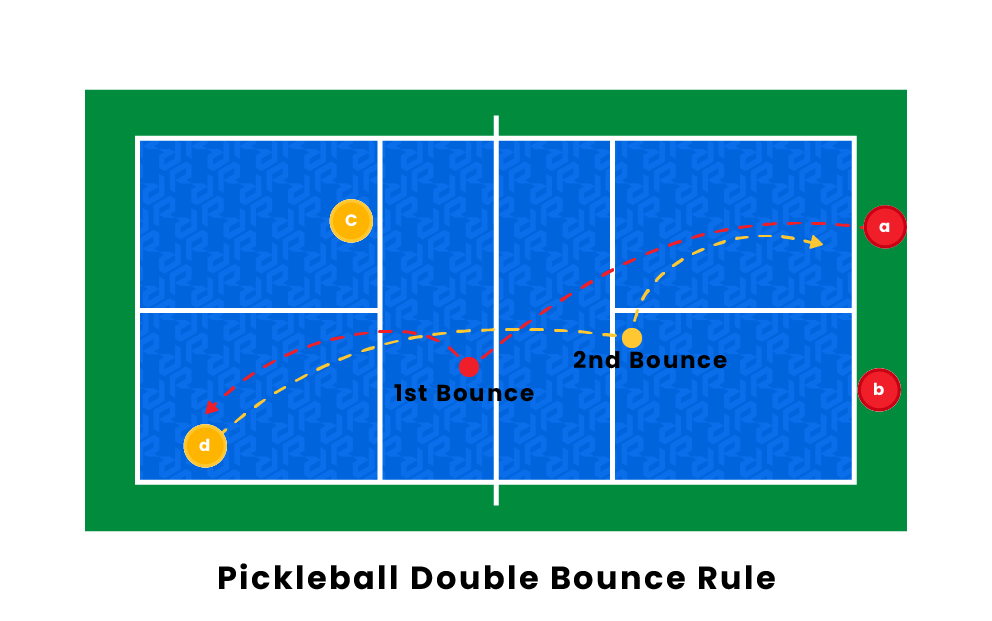
Racquetball, a fast-paced and fun game, can be played by one or more players. You can play singles or doubles, one against one or two against two. The rules are simple enough that even novices should be able play the game and have fun.
How to play
There are three main parts to raquetball: serving, receiving and scoring. While there are variations for different versions of Racquetball there are three basic rules you should know.
Service
You must be at arm's reach of the back wall to serve in racquetball matches. Once you are there, hit the ball against the wall. The server for this game is the player with the closest bounce to the front walls.
If the server serves a fault, the opponent wins the point and becomes the server for the next serve. The server then has two chances to serve successfully.

Returns
After a successful service, players return the ball alternately until one fails to make a good return. The return can be either directly to the front wall or by hitting it onto other walls before bouncing twice on the floor.
The rally ends when the ball is returned by the first person to win it. The serving team cannot earn points from that rally but they can score the next point if they win their next serve and then receive a second return.
Doubles
In racquetball, teams of two players are formed for tournaments and competitions. They can play singles or doubles. They may also opt to form a "cut throat team" of three.
How to play with Doubles
Racquetball rules in doubles are stricter than singles. For instance, you can only use one racquet per player. You cannot stand behind your partner while they return the ball.
You cannot hit the ball with a tennis racquet that is not slung over one's shoulder. The wrist thong must be securely held in place.

To be considered a serving fault, the server must put the ball in play within ten minutes of the referee calling the score. A server error is when the ball isn't served correctly in the box.
Safety Zone Violations
The safety zone in racquetball refers to the area between the doubles partner's and server's service boxes. The safety zone is the area between the doubles partners' service boxes.
Defective Serve
The serving player and doubles partner must remain in the safety line until the served ball crosses the short-line.
FAQ
Are there exercises I shouldn’t perform?
Before you start any new exercise routine, it is important to consult your doctor. You may have injuries or other medical conditions that prohibit you from exercising in certain ways. Some activities may require special equipment, or training. Swimming, for example, requires swimming suits and access to the pool.
Is exercise good for me?
Yes. Regular exercise will help to reduce weight by burning more calories. Your metabolism will remain high, so you can continue to burn calories even though you're not exercising.
What Does Nutrition Do for Your Body?
By providing all the nutrients necessary for growth and development, nutrition helps your body function well. The best way to ensure that you receive adequate nutrition is to eat a balanced diet with plenty of fruits and vegetables, lean proteins, whole grains, and healthy fats.
How can I start with fitness?
Start small. Start small by walking around the block for 10 minutes every day. This will help you learn basic movements and allow your muscles to adjust to the new routine. Once you are comfortable with this form of exercise and have gained some experience, you can start adding steps to your daily workout routine.
Statistics
- Globally, 81% of adolescents aged 11-17 years were insufficiently physically active in 2016. (who.int)
- One study showed that adults who watch more than 4 hours of television daily had an 80% higher risk of death from cardiovascular disease. (heart.org)
- An estimated 110,000 deaths per year could be prevented (cdc.gov)
- Adolescent girls were less active than adolescent boys, with 85% vs. 78% not meeting WHO recommendations of at least 60 minutes of moderate to vigorous intensity physical activity per day. (who.int)
External Links
How To
How To Burn Belly Fats Faster
Belly Fat is often considered a problem for those who want to lose weight. If you look at it, belly fat is actually a positive thing. It is the fat in your stomach that protects your organs. Let's now see how to quickly lose belly fat.
Stress and inactivity are two of the major factors that cause us to store body fat. Cortisol hormone is stimulated by stress, which causes us to feel constantly hungry. Cortisol levels are increased by insulin. The excess calories are stored as fat by insulin. An increased appetite can be caused by a lack of sleep. These extra calories can be broken down by exercising.
There are many ways to reduce belly fat. Depending on your budget, you can try each one. These are some ways to quickly lose belly fat.
-
Reduce your food intake. Instead of eating three large meals per day, try to eat smaller meals. This way, you'll consume fewer calories overall.
-
Drink plenty of water. Water flushes out toxins, and keeps your body hydrated. You won't overeat if you drink water before you eat.
-
Avoid snack foods that are unhealthy. If you're looking for quick fixes, snack foods like chips, cookies, candies, etc. This might be tempting. But avoid these fattening treats as they contain lots of empty calories and too much sugar. Choose healthy alternatives like fruits and vegetables, nuts, seeds, whole grains, and seeds.
-
Strength training should be performed at least 3 times per week. Strength training increases muscle mass, which can help you burn more calories while still resting. It strengthens bones and muscles, ligaments, muscles, tendons, heart, lungs, as well as joints.
-
Move regularly and stretch. Stretching improves flexibility and mobility which can reduce back pain. Walking can help you burn calories.
-
Reduce alcohol intake. Avoid alcohol.
-
Lose weight gradually. Finding out your current weight is the first step in losing weight. Then calculate your ideal weight by adding 5% to 10% of your total body weight. Once you have determined your ideal weight, you can start to reduce your calorie intake by 500-1000 calories per day until you reach it.
-
Avoid processed foods. These foods are high in salt, sugar, preservatives, and other harmful ingredients. While processed foods can be convenient, they don't offer enough nutrients to ensure your health.
-
Don't skip breakfast! Breakfast is good for your concentration, memory, and energy. Breakfast should include protein (like eggs), fiber (like oats), and complex carbohydrates (like oatmeal).
-
Have regular bowel movements. Gas and bloating can result from irregular bowel movements. You can prevent this by drinking lots of water and increasing your fiber intake.